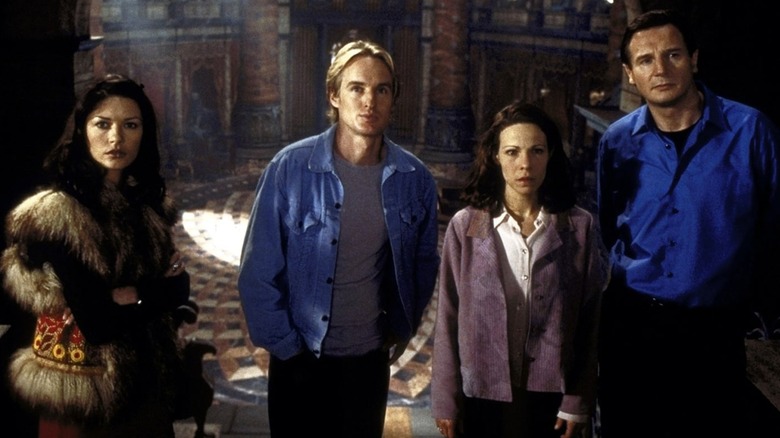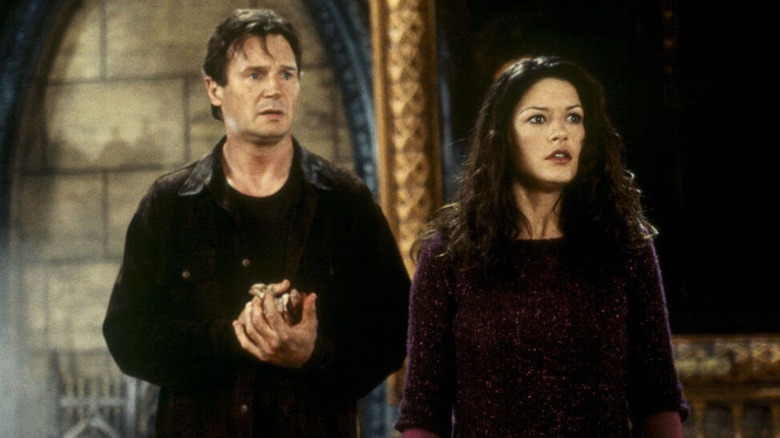“The Hanting of Hill House” by Shirley Jackson attracts us to his Gothic and macabre world before even fixing us on the holder manor. When we finally see the frightening residence, the haunting prose of Jackson seriously the image of a house which observes and reacts to the human presence, being just as sensitive as its inhabitants. The real horror, however, lies in tacit fears mentioned by such a horrible and surreal place. When the manor brings out the worst anxieties of our protagonist, Eleanor Vance, it is difficult not to slip into your shoes and to absorb some of its fears.
As a key to capturing the heart of Jackson’s frightening tale is to explore these subtleties, few adaptations have managed to reinvent the premise of the book in its own terms. The most efficient and notable effort (so far) is “The Haunting of Hill House” by Mike Flanagan, who uses Jackson’s haunted content as a loose foundation for Navigate sorrow and its generational socket on the Crain family. While Flanagan’s tale enriches the world of the novel by diving deep into the character-psycheThe eponymous adaptation of Robert Wise in 1963 offers an interpretation at the level of the usable surface of Jackson’s work. Although deeply imperfect, the version of Wise is an unforgettable visual show, thanks to the intelligent use of the light and the shadow of the director of photography Davis Boulton to induce fear and claustrophobia.
However, there is a third Often forgotten adaptation of Jackson’s novel which did well at the box office, despite the mainly negative criticism of criticism. I am talking about “The Haunting” from 1999, which has little to do, except a large and magnificent design. But the pretty aesthetic cannot recover a horror title which is not frightening or without suspense, and it cannot hide the absolute lack of depth which it connects from start to finish. It’s a shame, because the film features really capable actors, including the stage thief Lili Taylor, whose shiny presence is completed by Liam Neeson, Owen Wilson and Catherine Zeta-Jones. So what’s wrong with exactly here?
Jan de Bont’s haunting priority style on the substance
During the first stages of the film, “The Haunting” was intended as a remake of Wise’s adaptation in 1963 and began as a collaboration between Steven Spielberg (!) And Stephen King. Although this could have been a solid creative team, Fate had other plans, because King and Spielberg could not continue to work together due to creative differences. Although Spielberg ordered a script for the film in order to continue, he then approached Jan de Bont (“speed”, “Twister”) and offered the Borde “Minority Report” in exchange for Bont taking care of “The Haunting”. Retrospectively, it was a good decision, because The approach of Spielberg to the adaptation of Philip K. Dick is both clear and stimulatinghighlighting his forces as a successful filmmaker.
On the other hand, De Bont turned out to be poorly adapted to a horror title focused on the characters, even if he has recashed the objective of the film by prioritizing the source equipment of Jackson. All the ingredients necessary to make a convincing adaptation were present: an interior design team which included the attraction of Gothic horror, a director of photography (Karl Walter Lindenlaub of “Stargate” and “Day of independence”) which could give life to this vision, and a stacked cast of talent.
However, the treatment of the premise by De Bont is so dull and devoid of thrills that “the haunting” is hardly recognized when we speak of the book it adapts. Such treatment is somewhat justified, because the film feels less deep than the horror of the haunted house of Wise, which really manages to frighten and let our imagination are unleashed.
What do The work here is the sets, which are both beautiful and striking. A piece of interior sets was built inside the Hughes H-4 Hercules Air Transport Boat, which wore the housing spaces before its operational team dissolved in 1976. The production designer Eugenio Zanetti injects these sets with large and inspiring Gothic and inspiring Gothic conceptions which have Gothic conceptions of the Hill Hill de Jackson.
Alas, no amount of dark and terrifying interior spaces can trap us in a Gothic world that has no significant participations and focus on characters who feel subscribed after reflections.





